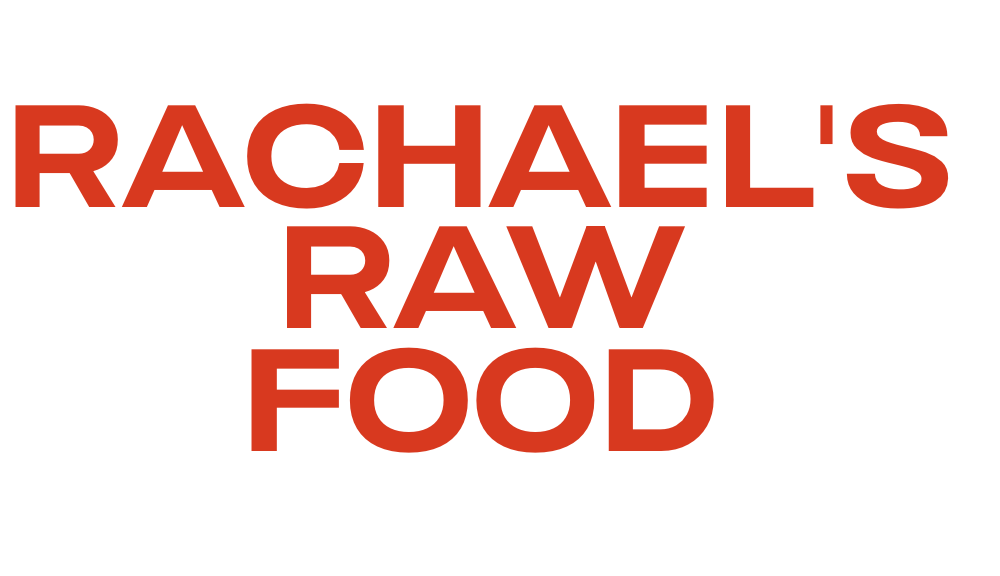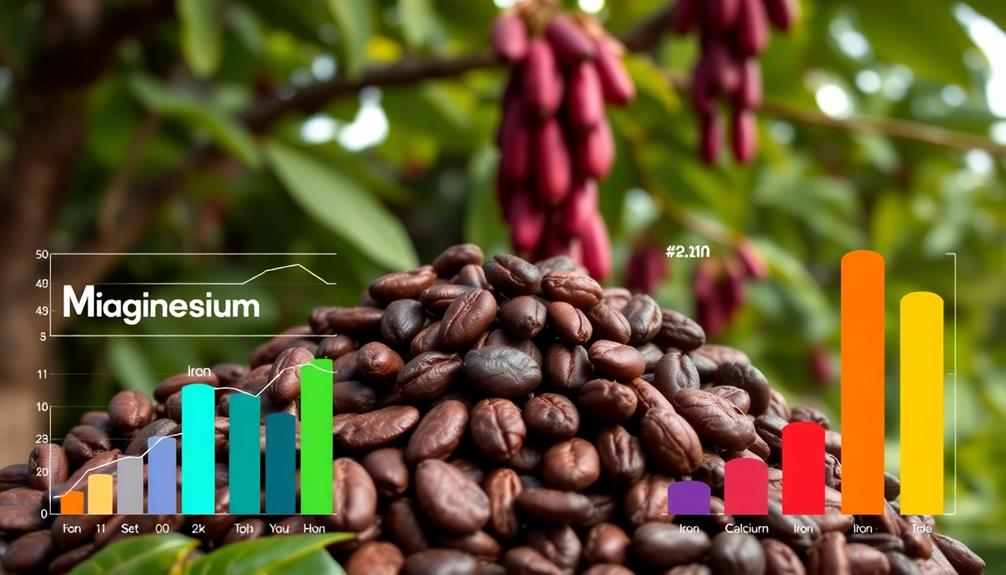Picture yourself entering your preferred fast food joint, with the enticing aroma of burgers sizzling in the air. Your anticipation grows as you wait for your order. However, have you ever thought about the possible dangers associated with handling raw food in these establishments? Should employees at fast food restaurants be required to wear gloves in order to guarantee the highest level of food safety?
In this article, we will explore the importance of food safety in fast food establishments, the potential risks of handling raw foods, and the benefits and drawbacks of wearing gloves. By examining proper handwashing techniques, industry regulations, and real-life case studies, we will navigate the fine line between safety and efficiency in fast food operations.
So, let’s dive in and make informed decisions for food safety practices that protect both workers and customers alike.
Key Takeaways
- Fast food workers should wear gloves when handling raw foods to prevent cross-contamination and the spread of harmful bacteria and foodborne illnesses.
- Proper handwashing techniques are crucial in maintaining food safety, and gloves should be changed regularly and hands washed before and after glove use.
- Wearing gloves while handling raw foods enhances customer perception of hygiene and professionalism in fast food establishments, which is important for maintaining business reputation.
- Fast food establishments must prioritize food safety and continuously train and educate their workers on proper food handling practices, including glove usage, to ensure the well-being of their customers.
The Importance of Food Safety in Fast Food Establishments
When it comes to fast food, it’s crucial for workers to prioritize food safety in order to ensure the well-being of their customers. One of the key aspects of food safety in fast food establishments is the importance of regular inspections.
These inspections are conducted by health authorities to ensure that food handling practices are being followed correctly and that the establishment is maintaining a safe and clean environment. Regular inspections help identify any potential risks or violations that could compromise the safety of the food being served.
In addition to inspections, the role of supervisors in enforcing food safety measures is also vital. Supervisors play a crucial role in ensuring that all employees are trained properly in food handling and safety protocols. They monitor and enforce proper handwashing techniques, the use of clean utensils, and the maintenance of appropriate food temperatures. By actively supervising and reinforcing these measures, supervisors help minimize any potential risks associated with food handling.
Transitioning into the subsequent section about the potential risks of handling raw foods, it is important to note that these risks can be significantly reduced when workers follow proper food safety practices.
The Potential Risks of Handling Raw Foods
To minimize potential health hazards, it is advisable for individuals who come into direct contact with uncooked ingredients to employ protective measures. The risks of improper food handling and the importance of proper food storage cannot be overstated. When handling raw foods, fast food workers must be aware of the potential dangers and take necessary precautions to ensure the safety of both themselves and the customers they serve.
Improper food handling can lead to the spread of harmful bacteria and foodborne illnesses. Cross-contamination, where bacteria from one food item is transferred to another, can occur if proper hygiene practices are not followed. This can happen when workers handle raw meats and then touch other ingredients without washing their hands or changing gloves. Additionally, if raw foods are not stored at the correct temperatures, bacteria can multiply rapidly, increasing the risk of foodborne illnesses.
To emphasize the importance of proper food handling, consider the following table:
| Risks of Improper Food Handling | Importance of Proper Food Storage |
|---|---|
| Foodborne illnesses | Prevents bacterial growth |
| Cross-contamination | Maintains food quality |
| Health code violations | Reduces risk of foodborne illness |
By wearing gloves, fast food workers can create a barrier between their hands and the raw ingredients, reducing the risk of cross-contamination. Additionally, gloves can be changed frequently, ensuring a higher level of cleanliness. Transitioning into the next section, the benefits of wearing gloves will be explored.
The Benefits of Wearing Gloves
Wearing gloves while handling raw foods in the fast food industry has several benefits. Firstly, it helps prevent cross-contamination between different food items. By wearing gloves, I can avoid transferring harmful bacteria or allergens from one food to another, ensuring the safety and quality of the final product.
Additionally, wearing gloves provides protection against foodborne illnesses, as it acts as a barrier between my hands and the raw ingredients, reducing the risk of contamination and potential infection.
Overall, implementing glove usage in fast food establishments is an important measure to maintain food safety standards and protect the health of both employees and customers.
Prevention of Cross-Contamination
Make sure fast food workers wear gloves when handling raw foods to prevent cross-contamination, as it can lead to foodborne illnesses. Preventing cross-contamination is crucial in enhancing food safety in fast food establishments.
When workers handle raw foods with their bare hands, they risk transferring harmful bacteria from the raw food to other surfaces or ready-to-eat foods. By wearing gloves, fast food workers create a barrier between their hands and the food, reducing the chances of cross-contamination. This simple step can significantly minimize the risk of foodborne illnesses for customers.
Gloves act as a protective layer, preventing direct contact between hands and potentially harmful pathogens. By implementing this practice, fast food establishments can ensure the safety and well-being of their customers.
Transitioning into the next section, it’s also important to address the protection against foodborne illnesses that gloves provide.
Protection against Foodborne Illnesses
Gloves act as a shield, safeguarding against the invisible dangers of foodborne illnesses. Proper food handling techniques, combined with the use of gloves, are essential for preventing contamination and protecting the health of both customers and workers.
Foodborne illnesses, such as salmonella and E. coli, can easily be transmitted through contact with raw foods. Wearing gloves provides a physical barrier between the hands and the food, reducing the risk of cross-contamination. Additionally, gloves remind workers to maintain proper hand hygiene, as gloves should be changed regularly and hands should be washed before and after glove use.
By following these guidelines, fast food workers can significantly decrease the likelihood of foodborne illnesses spreading.
Transitioning into the subsequent section about the drawbacks of wearing gloves, it is important to consider the potential challenges faced by workers in maintaining proper glove usage.
The Drawbacks of Wearing Gloves
Although there are some drawbacks, wearing gloves can actually help fast food workers in handling raw foods more efficiently and safely.
-
Gloves provide a barrier between the worker’s hands and the food, reducing the risk of cross-contamination. This is especially important when handling raw meats, which can contain harmful bacteria like Salmonella or E. coli. By wearing gloves, workers can prevent the transfer of these bacteria onto the food, protecting both themselves and the customers.
-
Gloves also offer protection for the workers themselves. Handling raw foods without gloves can lead to skin irritation or allergic reactions, especially when dealing with certain ingredients like chili peppers or seafood. By wearing gloves, workers can minimize the risk of developing these uncomfortable and potentially painful conditions.
-
Furthermore, gloves can improve efficiency in the fast-paced environment of a fast food restaurant. They allow workers to handle food more easily and quickly, without the need to constantly wash their hands. This helps to maintain a smooth workflow and ensures that orders are prepared promptly.
While wearing gloves may have its drawbacks, such as the potential for gloves to tear or puncture, the benefits of using gloves in handling raw foods outweigh the disadvantages.
In the next section, we will explore proper handwashing techniques as an additional measure to ensure food safety.
Proper Handwashing Techniques
Proper handwashing techniques play a crucial role in maintaining food safety. Fast food workers must be trained and educated on the importance of hand hygiene to prevent the spread of harmful bacteria and diseases.
By following the correct handwashing procedures, fast food workers can help ensure the safety and well-being of both themselves and their customers.
The Role of Hand Hygiene in Food Safety
You may be surprised to discover the significant impact that hand hygiene has on ensuring food safety. Proper handwashing techniques play a crucial role in preventing the spread of harmful bacteria and viruses, ultimately protecting the health of both customers and fast food workers. Maintaining good hand hygiene not only reduces the risk of contamination during food preparation but also influences customer perception of the establishment’s cleanliness and professionalism.
To illustrate the importance of hand hygiene, consider the following table:
| Handwashing Technique | Benefits | Recommended Duration |
|---|---|---|
| Soap and water | Removes dirt, grease, and microorganisms | At least 20 seconds |
| Hand sanitizer | Kills most germs on the hands | At least 20 seconds |
| Antimicrobial wipes | Effectively cleans hands | At least 20 seconds |
By following these handwashing techniques, fast food workers can significantly reduce the likelihood of foodborne illnesses. However, proper hand hygiene is just one aspect of ensuring food safety. Transitioning into the subsequent section about ‘training and education for fast food workers,’ it is essential to provide comprehensive knowledge and skills to enhance their overall food handling practices.
Training and Education for Fast Food Workers
When it comes to mastering the art of food safety, it’s crucial for fast food employees to undergo comprehensive training and education that equips them with the necessary skills and knowledge to handle food safely and flawlessly.
Effective training methods play a vital role in ensuring employee compliance with food safety protocols. Some key training techniques include hands-on demonstrations, interactive workshops, and online courses that cover topics such as proper handwashing techniques, cross-contamination prevention, and temperature control.
By investing in thorough training programs, fast food establishments can empower their employees to prioritize food safety and minimize the risk of foodborne illnesses. This not only protects the health and well-being of customers but also enhances the reputation and credibility of the business.
Moving forward, it is important to consider the role of gloves in customer perception.
The Role of Gloves in Customer Perception
To really impress your customers, wearing gloves while handling raw foods can make a world of difference in their perception of your fast food establishment. Not only does it show a commitment to food safety, but it also demonstrates a level of professionalism that can enhance customer satisfaction. Studies have shown that customers are more likely to trust establishments that prioritize hygiene and employee compliance with industry regulations.
A 2015 study published in the Journal of Food Protection found that customers’ perception of hygiene in fast food restaurants significantly improved when employees wore gloves while handling raw foods. This simple act can help alleviate any concerns customers may have about cross-contamination and foodborne illnesses.
To better understand the impact of wearing gloves on customer perception, let’s take a look at the following table:
| Perception of Fast Food Establishment | Gloves Worn by Employees |
|---|---|
| Positive | Yes |
| Neutral | No |
| Negative | No |
| Positive | Yes |
As you can see from the table, wearing gloves has a direct correlation with a positive perception of the fast food establishment. Customers are more likely to view the establishment favorably when they see employees taking the necessary precautions to ensure their safety.
Moving forward, it is important to consider industry regulations and guidelines to maintain a high standard of food safety.
Industry Regulations and Guidelines
Make sure you’re aware of the industry regulations and guidelines that ensure the highest standards of food safety. Adhering to these standards is crucial for fast food workers when handling raw foods.
The food industry has established specific regulations and guidelines to maintain food safety and prevent the spread of foodborne illnesses. Here are some key points to consider:
-
Industry standards: The fast food industry follows strict guidelines set by regulatory bodies to ensure safe handling of raw foods. These standards cover areas such as personal hygiene, equipment sanitation, and proper glove usage.
-
Regulatory compliance: Fast food establishments are required to comply with local, state, and federal regulations. These regulations outline the necessary steps to maintain food safety, including the use of gloves when handling raw foods.
-
Regular inspections: Regulatory authorities conduct routine inspections to ensure that fast food establishments are following the prescribed guidelines. These inspections help identify any potential violations and ensure that corrective actions are taken promptly.
-
Training and education: Fast food workers receive proper training and education on food safety practices, including the use of gloves. This training helps them understand the importance of following industry standards and complying with regulations.
-
Continuous improvement: The fast food industry constantly strives to improve food safety measures. This includes staying up to date with the latest research and advancements in food safety practices.
Understanding and adhering to industry regulations and guidelines is essential for fast food workers to maintain the highest standards of food safety. Following these standards not only ensures customer satisfaction but also helps prevent foodborne illnesses.
In the next section, we’ll explore case studies and examples that highlight the importance of glove usage in fast food establishments.
Case Studies and Examples
Are you aware of the impact that proper glove usage can have on preventing foodborne illnesses in the fast food industry? It is crucial for fast food workers to wear gloves when handling raw foods to ensure the safety and well-being of both employees and customers. Let’s take a look at some case studies and real-life examples that highlight the importance of this practice.
| Case Study/Example | Outcome |
|---|---|
| Chipotle Outbreak (2015) | Over 50 people fell ill due to norovirus and E.coli contamination. The lack of proper glove usage was identified as a major contributing factor. |
| McDonald’s Lawsuit (2002) | A customer sued McDonald’s after contracting salmonella from contaminated food. The investigation revealed that the employee failed to wear gloves while handling raw chicken. |
| Taco Bell Hepatitis A Outbreak (2000) | Thousands of people were affected by the outbreak, which was traced back to an employee who did not wear gloves while preparing food. |
These case studies demonstrate the serious consequences that can arise from improper glove usage in fast food establishments. By not wearing gloves, workers risk contaminating the food they handle, leading to foodborne illnesses and potential lawsuits. It is essential for the industry to enforce regulations and guidelines that require fast food workers to wear gloves at all times when handling raw foods.
In the next section, we will explore the challenge of balancing safety and efficiency in fast food operations. It is important to find ways to maintain a high level of food safety without compromising the speed and efficiency that customers expect.
Balancing Safety and Efficiency in Fast Food Operations
In the previous section, we explored case studies and examples that highlighted the importance of fast food workers wearing gloves when handling raw foods. These real-life scenarios demonstrated the potential risks of cross-contamination and foodborne illnesses that can arise without proper safety practices in place.
Now, let’s delve into the delicate balance between efficiency and safety in fast food operations. Efficiency is a crucial aspect of the fast food industry, where speed is of the essence. However, we must not compromise on safety when aiming for optimal efficiency.
Fast food workers play a pivotal role in ensuring food safety, and proper training is essential to strike the right balance. By providing comprehensive training programs, fast food establishments can equip their workers with the knowledge and skills necessary to handle raw foods safely and efficiently.
Efficiency and safety go hand in hand when it comes to fast food operations. By training workers to follow proper hygiene practices and emphasizing the importance of wearing gloves when handling raw foods, establishments can minimize the risk of foodborne illnesses while maintaining efficient service. Achieving this delicate balance requires ongoing training and reinforcement of food safety protocols.
Now, let’s move on to the next section, where we will explore how establishments can make informed decisions for food safety practices.
Making Informed Decisions for Food Safety Practices
Discover how you can ensure the safety of your customers and maintain high standards of food handling by making informed decisions about food safety practices.
When it comes to handling raw foods in fast food operations, one important consideration is whether fast food workers should wear gloves. This decision must take into account both the cost of implementing food safety practices and the impact of food safety on business reputation.
Implementing food safety practices, such as requiring workers to wear gloves when handling raw foods, does come with a cost. The purchase and regular replacement of gloves can add up, especially for large fast food chains with numerous employees. Additionally, the time spent on putting on and taking off gloves can slow down the food preparation process, potentially impacting efficiency.
However, the potential impact on business reputation cannot be ignored. Customers expect their food to be prepared in a safe and hygienic manner, and any incidents of foodborne illnesses can severely damage a fast food establishment’s reputation. By implementing food safety practices, such as glove usage, fast food operations can demonstrate their commitment to ensuring the safety of their customers.
Making informed decisions about food safety practices is crucial for fast food operations. While there may be costs associated with implementing these practices, the potential impact on business reputation should not be overlooked. By prioritizing the safety of customers and maintaining high standards of food handling, fast food establishments can protect their reputation and ensure the well-being of their customers.
Frequently Asked Questions
How often should fast food workers change their gloves when handling raw foods?
Fast food workers should change their gloves frequently when handling raw foods to prevent cross-contamination. Proper hand hygiene is essential, and workers should wash their hands for at least 20 seconds before putting on new gloves.
Wearing gloves offers several benefits, such as protecting against the spread of bacteria and reducing the risk of foodborne illnesses. Regular glove changes ensure that any potential contaminants are removed, maintaining food safety standards in fast food establishments.
Are there any alternatives to wearing gloves for fast food workers when handling raw foods?
There are alternative hygiene practices that fast food workers can follow when handling raw foods, apart from wearing gloves.
For instance, frequent handwashing with soap and water is crucial to maintain cleanliness. Additionally, using utensils and tongs to handle raw foods can minimize direct contact. Proper training on safe food handling practices is also essential to ensure the prevention of cross-contamination.
These alternatives, when practiced diligently, can maintain hygiene standards in fast-food establishments.
Can wearing gloves while handling raw foods lead to a false sense of security?
Wearing gloves while handling raw foods in fast food establishments can potentially lead to a false sense of security. Studies have shown that gloves can create a barrier between the worker and the food, reducing the direct contact and risk of contamination. However, it’s important to note that gloves alone aren’t sufficient in preventing foodborne illnesses. Proper hand hygiene, including thorough handwashing, is equally crucial. Additionally, regular glove changes and proper glove usage must be followed to ensure food safety.
What are the potential consequences of not wearing gloves when handling raw foods in fast food establishments?
The potential consequences of not wearing gloves when handling raw foods in fast food establishments can lead to various health risks. Without gloves, there’s an increased risk of contamination and the spread of foodborne illnesses. Bacteria and pathogens can easily transfer from the hands to the food, causing illnesses such as salmonella or E. coli. Wearing gloves serves as a protective barrier, minimizing the chances of cross-contamination and ensuring the safety of both the workers and customers.
How do fast food workers ensure that gloves are properly sanitized before handling raw foods?
Proper glove sanitation is crucial in fast food establishments. To ensure cleanliness, workers must follow strict protocols. For example, at my previous job, we had a ‘glove changing dance’ where we would vigorously wash and sanitize our hands before putting on new gloves. This ensured that any potential contaminants were eliminated.
Additionally, gloves were changed frequently, especially after handling raw foods. This practice minimized the risk of cross-contamination and ensured the safety of both workers and customers.
Should Fast Food Workers Be Required to Wear Gloves When Handling Both Raw and Cooked Foods?
Fast food workers should be required to wear gloves when handling both raw and cooked foods. In addition to gloves, using separate utensils for raw and cooked food is essential to prevent cross-contamination and maintain food safety standards. This practice helps minimize the risk of foodborne illnesses and ensures the well-being of customers.
Conclusion
In conclusion, it is absolutely unnecessary for fast food workers to wear gloves when handling raw foods. Who needs to protect against the potential risks of cross-contamination and foodborne illnesses anyways?
Let’s just throw caution to the wind and hope for the best. After all, who needs proper handwashing techniques and industry regulations when we can rely on chance?
So go ahead, enjoy your fast food and embrace the uncertainty. Bon appétit!

















